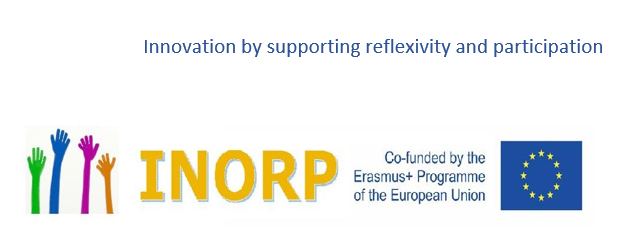Reflexivity and participation in communities CZ

6. Post-graduate module suggestions (2nd cycle)
6.1. Example 1: Participation in the context of child welfare and child protection
(to be elaborated in seminar discussions, covering all sections through exercises over a period of 10 hours)
| Theme | Topic and skills | Guiding questions |
| Legal and organisational context |
International level of rights: Nevertheless: national law imposes limitations, e.g. Agency context: |
To what extent does my intervention plan
To what extent does my agency context |
| Format of encounters |
In cases of concerns about child welfare and protection, the following formal scenarios pose challenges to the extent children can be directly Child Protection Conferences: “there is a substantial body of evidence indicating that, despite children’s social care meetings with professionals and families being a key forum for making decisions (Healy and Darlington, 2009), many meetings such as child protection case conferences do not seem to embody or enable principles of self-determination for parents and children. Perhaps because of this, they are often reported to be very difficult for parents and, when they attend, children” (see Hall and Slembrouck, 2001). Cited in Stabler, 2020 p. 30. Family group conferencing is a way of transforming decision making and planning for children into a process led by family members … Children and young people can also be directly involved in their family group conference, usually with the support of an advocate. (ibid) Families here can be given more responsibility for making decisions – and taking Family Team Decision Making / Family Involvement Meetings and joined case planning have been |
What structural, organisational and relational factors may impact the manner in which a child takes To what extent can your role modify the extent of direct participation by |
| Guiding principles |
Prevailing background: Research on children’s experiences and preferences emphasise the following key principles for achieving more positive outcomes: • Collaboration and engagement: before the meeting working with the child/young person so that they are fully prepared for what the meeting is about, what it will look like, what might be shared; during the meeting the child/young person has access to an advocate to support them to take part; after the meeting the child/ young person is offered support that is relevant to their preferences and needs based on people at the meeting having listened to what they had to say. • Building trust and reducing shame: before the meeting the child/ young person is given choices around elements of the meeting, such as where it will be held, who might attend to support them, where everyone should sit; during the meeting the child/young person has some control over how they are involved in the meeting, and are able to leave the room as they need to; after the meeting the process of having participated and shared in a meeting, and having been responded to in a positive way, can build confidence and encourage the child/young person to actively participate in decisions about their lives. • Enabling participation in decision making during the meeting ensuring involvement throughout the meeting, rather than just including children and young people at a point specified for ‘the child’s voice’; |
In what circumstances can participation by
What are the consequences for your preparation for family meetings drawn from research findings? Can you suggest |
Resources:
Ashley, C., Holton, L., Horan, H. & Wiffin, J. (2006) The Family Group Conference Toolkit — a practical guide for setting up and running an FGC service (London, Family Rights Group)
Ashley, C. and Nixon, P. (2007) Family Group Conferences: Where Next? Policies and Practices for the Future. London: Family Rights Group.
Bell, M. (1999) ‘Working in partnership in child protection: the conflicts’, The British Journal of Social Work, 29(3): 437–55.
Bell, M. (2002) ‘Promoting children’s rights through the use of relationship’, Child & Family Social Work, 7(1): 1–11.
Featherstone, B., Morris, K., Daniel, B., Bywaters, P., Brady, G., Bunting, L., Mason, W., & Mirza, N. (2019). Poverty, inequality, child abuse and neglect: Changing the conversation across the UK in child protection? Children and Youth Services Review, 97, 127-133 https://doi.org/10.1016/j.childyouth.2017.06.009
Godar, R. (2015) ‘The hallmarks of effective participation: evidencing the voice of the child’, in M. Ivory (ed.), The Voice of the Child: Evidence Review. Dartington: Research in Practice, pp 10–21. https://www.researchinpractice.org.uk/children/publications/2015/december/voice-of-the-child- evidence-review-2015/
Hall, C. and Slembrouck, S. (2001) ‘Parent participation in social work meetings – the case of child protection conferences’, European Journal of Social Work, 4(2): 143–60.
Hartas, D. and Lindsay, G. (2011). ‘Young people’s involvement in service evaluation and decision making’. Emotional and Behavioural Difficulties, 16(2): 129–43.
Marsh, P. and Crow, G .(1998). Family Group Conferences in Child Welfare. Oxford: Blackwell
Stabler, L. (2020). Children’s and parents’ participation: current thinking. In: C. Diaz (ed.). Decision Making in Child and Family Social Work. Perspectives on Children’s Participation (pp. 2-41). Bristol: Policy Press.
Tang, C. (2006) Developmentally sensitive interviewing of pre-school children: some guidelines drawing from basic psychological research. Criminal Justice Review, 31, 132– 14
Willow, C., Marchant, R., Kirby, P. & Neale, B. (2004) Young Children's Citizenship. Joseph Rowntree Foundation, London.
